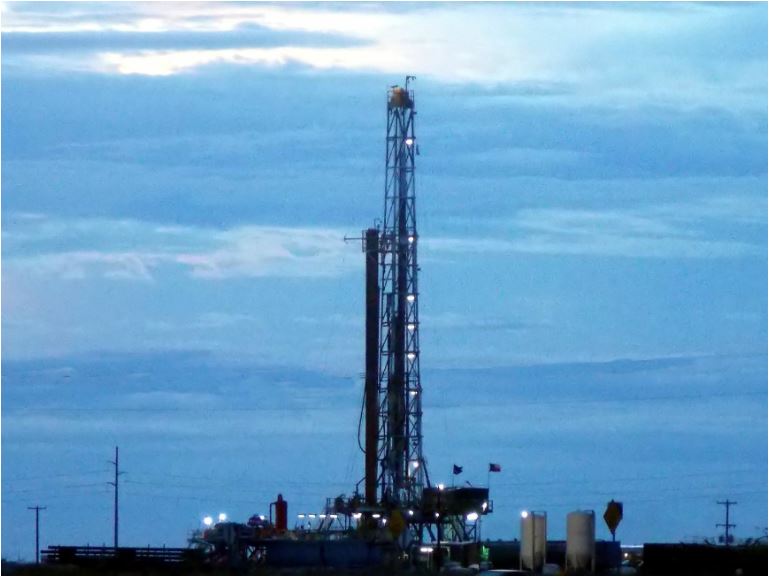There was a time when a quarter of the decline in oil price that has happened in the past two months would have sparked a global crisis. It would have opened the covers of all the news, and everyone would know the daily price of a barrel by heart, as in 2012 we knew the value of the risk premium. Today, with Brent oil at $ 24.23, there is practically no news in the news on this topic. And yet, much of what is going to happen with the formerly called Black Gold is going to affect us in the way we are going to get out of this situation.
We are going to see significant data by types of raw oil:
| Oil | Historical maximum ($) | Historical minimum ($) | Present value ($) 11.05.2020 | Variation last year (%) |
|---|---|---|---|---|
| Brent (*) | 143,95 | 9,12 | 24,23 | 68,37 |
| OPEP (**) | 140,73 | 12,22 | 22,71 | 70,5 |
| West Texas (***) | 145,31 | -36,98 | 24,73 | 62,45 |
(*) – It is the one used in Europe, and whose quality is by far the best to produce gasoline, diesel and kerosene.
(**) – It is an average of the prices of the countries that make up the Organization of the Petroleum Exporting Countries, and it is the one used as a reference for oil prices.
(***) – It is lighter than Brent, and it is mainly refined in the United States.
Although it may seem like a lie, we can see that it has been paid to sell a barrel. This is fundamentally because the drop in demand has reached 90% and there have also been storage problems for deliveries that were due in May. In other words, the drop in demand caused the wells to be closed overnight and the 100,000 barrels of contracts that expired in May had to be stored somewhere, in the case of the USA in Oklahoma. As these were full, it was seen that it was more beneficial to pay to sell and get rid of the merchandise, than to rent facilities to put the product.
If there is any sector that is going to be affected by this situation, it is fracking. It is a technique based on the oleo-hydraulic fracture of the shale, which is the bituminous rock that contains the hydrocarbons. Gas is injected into wells at 2,500 meters depth and with a very high pressure that causes a controlled fracture of the bottom of the well, where the hydrocarbon is. The liquid used is water with propping materials so that the well does not collapse and with chemicals that what they do is to favour the exit of the hydrocarbon to the surface
This practice has been controversial since it was born. Those who defend it, in addition to allowing much cheaper extraction than traditional wells, although it is still an expensive technique, argue that it allows access to deposits that were unthinkable with the traditional way, and that it is not more dangerous than any other already existing technique. However, detractors argue that aquifers are contaminated (it has been shown that this technique leaves nearly 600 chemical agents underground), that huge amounts of water are consumed and that there is an uncontrolled migration of chemical agents and gases to the surface. And not least, there are destabilizations of the land that cause an increase in seismic activity in the drilling areas.
The fracking technique has been used mainly in the USA, where with its marine wells, mainly in the area of the Gulf of Mexico, it was very difficult to compete on cost with the Arab countries, which have almost surface oil, especially in Arabia, which gave OPEC an almost absolute power to control the oil market. During the governments of President Obama, the USA increased its gas production by 35% and oil by 80%, at times surpassing the Saudis as the world’s leading oil producers.
So far, the facts. What from now on? Energy demand is estimated to fall by 6% in 2020, that is, seven times more than during the 2008 financial crisis. Carbon emissions have been reduced by 8%, and traffic has been reduced by 60%. It is true that when we recover a certain normality, an increase in private transport is foreseen to avoid crowds of the public, but it is no less true that some new jobs generated by this new situation based on telematics are here to stay.
With this panorama, it is necessary to be very careful to what is going to happen in the USA in the oil sector in the coming months. And this for several reasons:
-
The first is that the reference currency in the world of oil is the dollar. Europe has not been able to unseat the US currency as a benchmark in this sector. It is impossible to buy a barrel in Euros.
-
The second and much more important is the future of fracking. The shale industry survives with oil prices between $ 35 to $ 40 (some say that $ 30 is already profitable). With West Texas oil less than $ 25, all facilities are still shutdown and companies have sent all their employees home until the value of oil reaches around $ 30.
-
The above affects banks and investment funds that have already absorbed $ 50 billion of debt in the last 7 years. A really long period of red numbers is expected with the current situation. Of the $ 180 billion owed by the world’s top oil companies, more than 50% is unsupported. There are companies that are already filing for bankruptcy: there are 7 between January and April, the largest of which, Whiting Petroleum has $ 32 billion of debt, but it is expected that by the end of the year there will be more than 90.
-
Oil is governed by the futures market, which recently entered negative, something never seen before. This made a risk rating agency, such as Fitch, warn that the sector’s default ratio would reach 17%.
What will happen next Monday, May 18, when the June contracts mature? The whole sector has their sights set on that day. It seems that traders will try to get rid of the contracts before that day so that what happened in April does not happen again. New oil reserve locations are being sought to divert deposits. The number of operating wells has fallen to a third this year and the number of tons produced could well drop in the range of 30% to 35%. All to lower production and move from the current surplus to a situation close to shortages in order for oil to rise above $ 30 and wells to be profitable again.
And in the futures market? Lateral price dynamics suggest that investors are waiting for cuts in output to take effect on the global economy. Meanwhile, the process of lifting restrictions against coronavirus worldwide is also being monitored. These two factors are helping to drive the market higher. This means that the futures of crude oil West Texas Intermediate of the USA and of Brent, international reference, are rising, although slowly. Yesterday at noon, July WTI crude oil is trading at $ 26.35, falling $ 1.27 or + 5.06% and July Brent crude oil is at $ 30.52, rising $ 0.99 or + 3.34%.
The most important news that has been published recently is potentially bullish. Saudi Arabia has unexpectedly committed to increasing cuts in production in June, specifically by an additional 1 million barrels per day (bpd) in June, reducing its total production to 7.5 million bpd, which is 40% below April levels.
Given this panorama, not only the world’s eyes must be on the consequences of all these movements, but on how it affects other industries, fundamentally, the automotive, airlines and steel industries. Low oil can act as a reactivating element for the first two, which are going through a deep crisis due to the pandemic, and the uncertainties associated with it, especially on the issue of flights. Unfortunately, the opposite is the case for steel companies, who see investments in wells drop to never-before-seen levels and dramatically affect their order intake. If we add to this that this industry is subject to tariffs from the Trump administration in many parts of the world and especially in Europe, we have a powerful breeding ground for a long desert journey in this sector.
This chaotic situation in the oil sector will surely be taken advantage of by those companies that work in renewable energies and in the circular economy in general, to reinforce themselves as alternatives in the market.
We will have to start talking about all this and more at some point. The official and unofficial silence on what is coming in this sector must end soon. Because if we do not begin to reactivate it in a short period of time, we will see how international financial tensions begin again with an uncertain end. In case we don’t do so, oil will not be gold again (although that is not feasible in any case), but its future will be black.

